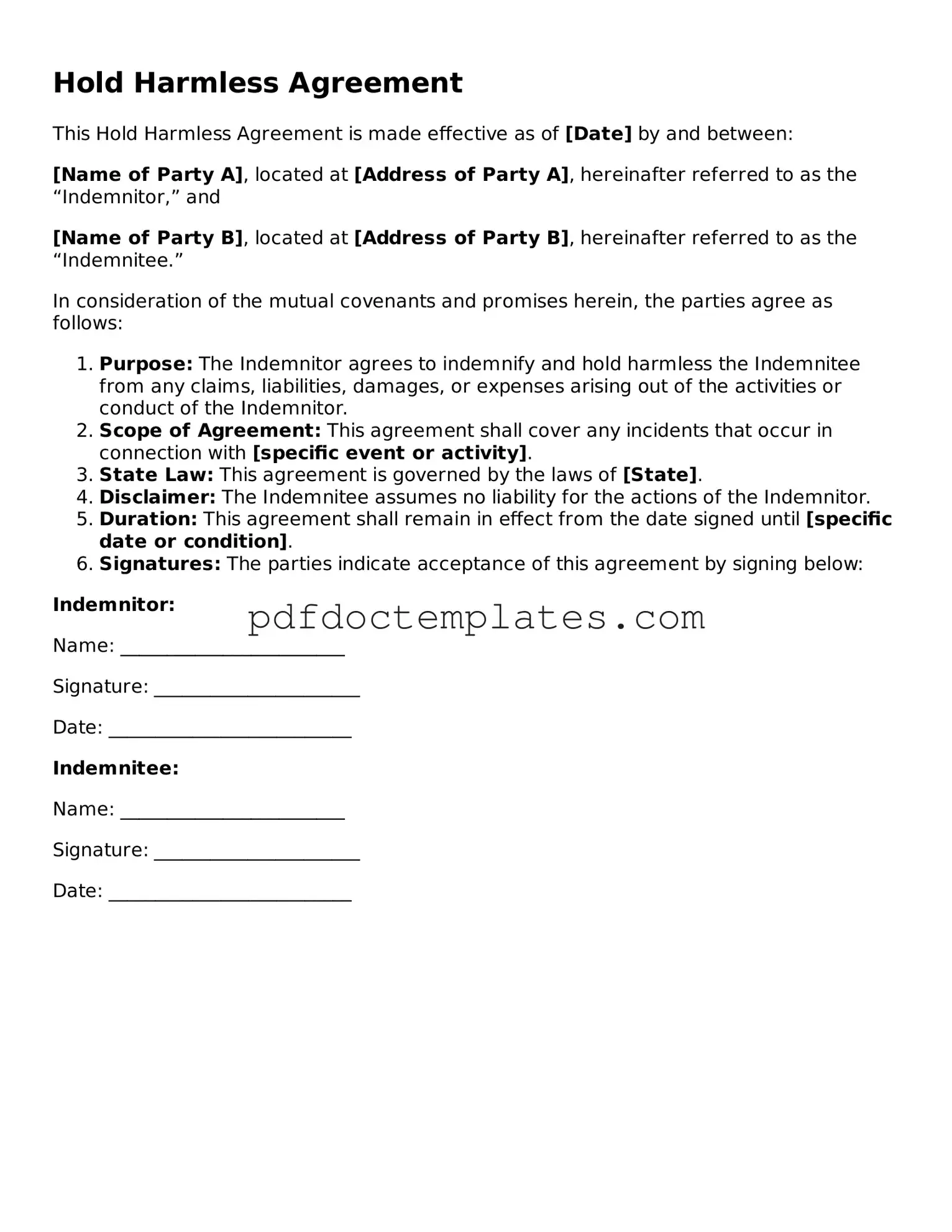Hold Harmless Agreement
This Hold Harmless Agreement is made effective as of [Date] by and between:
[Name of Party A], located at [Address of Party A], hereinafter referred to as the “Indemnitor,” and
[Name of Party B], located at [Address of Party B], hereinafter referred to as the “Indemnitee.”
In consideration of the mutual covenants and promises herein, the parties agree as follows:
- Purpose: The Indemnitor agrees to indemnify and hold harmless the Indemnitee from any claims, liabilities, damages, or expenses arising out of the activities or conduct of the Indemnitor.
- Scope of Agreement: This agreement shall cover any incidents that occur in connection with [specific event or activity].
- State Law: This agreement is governed by the laws of [State].
- Disclaimer: The Indemnitee assumes no liability for the actions of the Indemnitor.
- Duration: This agreement shall remain in effect from the date signed until [specific date or condition].
- Signatures: The parties indicate acceptance of this agreement by signing below:
Indemnitor:
Name: ________________________
Signature: ______________________
Date: __________________________
Indemnitee:
Name: ________________________
Signature: ______________________
Date: __________________________
